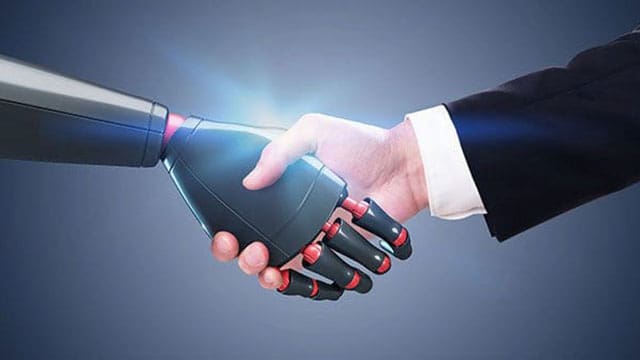AI is replacing jobs faster than ever. Then there’s Trump and his potential tariffs

For interview requests, click here
Economic and geopolitical challenges await Americans and Canadians in 2025.
AI isn’t just a buzzword. Regular readers of my columns will know I’ve said this more than once: while AI is being sold as a productivity tool, its ultimate goal is clear – to replace employees. In March 2023, Goldman Sachs economists predicted generative AI would eliminate or significantly reduce 300 million full-time jobs globally, mostly among white-collar workers.
As employees demand more, they become more of a liability, pushing employers to invest in AI, automation, and self-serve technologies instead of people. Why pay someone $70,000 a year – who’ll still complain it’s not enough – when a software company can handle the task for a fraction of the cost? According to McKinsey Global Institute, nearly 30 per cent of all hours worked by 2030 could be automated.
Some businesses are already making moves. Dropbox, for example, cut staff and pointed to AI as a factor. UPS claims AI isn’t replacing workers, but it’s hard to believe that when they’ve laid off staff while touting their “efficiency gains.” Andy Challenger, senior VP at outplacement firm Challenger, Gray & Christmas, put it bluntly: “There are probably more jobs in the economy being cut because of AI than are publicly attributed to it.”
 Getty Images |
| Recommended |
| Crack the job market code by showcasing what makes you one-of-a-kind
|
| The secret to finding the job you want
|
| How professionals can thrive in an AI-driven world
|
Let’s be honest – 2025 isn’t about predicting whether companies will lean into technology. They already are. Businesses will keep using AI, automation, self-serve options, and offshoring to cut costs. Freelancers and contract workers will fill gaps as companies get leaner – reducing management roles, flattening structures, and achieving more with fewer employees. We’re heading into a world of just-in-time workers.
Right now, boardrooms are debating the costs and liabilities of human labour versus AI. And as AI becomes more human-like – and trust me, we’ve seen nothing yet – you and I will be competing against it, not each other. The big question is, how will we, as a society, restructure ourselves when technology takes over much of the white-collar work we’re doing today? Will we finally get around to discussing universal basic income, funded by companies through a revamped corporate tax system?
Here’s my advice, which I know you’ve heard before: Make learning AI a priority. Learn it deeply. Learn or get left behind – it’s that simple.
In 2024, I heard from readers worried about job security. Layoffs were everywhere, and many felt helpless. If you’re in the same boat, it’s time to shift that energy. Worrying about how businesses operate won’t change anything. Instead, focus on what you can control: learn AI. Take the initiative to stay ahead of the curve. It’ll give you some much-needed control as layoffs – yes, they’ll continue in 2025 – make the headlines.
Business model of the near future: AI + Fewer Employees.
But AI isn’t the only threat to jobs. There’s also the looming potential for an economic shock that many are ignoring – or not fully considering: Donald Trump following through on his threat to impose a 25 per cent across-the-board tariff. This would devastate Canada, where 70 per cent of trade is tied to the U.S., and two-thirds of our GDP depends on trade.
About 2.4 million Canadian jobs rely on cross-border demand, leaving them vulnerable to U.S. tariffs. To be clear, “vulnerable” doesn’t mean all 2.4 million jobs would vanish overnight if a tariff were imposed. Many would remain, but with reduced hours and lower pay.
Trump has pledged to undo everything Biden did, including policies that spurred economic growth and workforce development. If Trump makes good on his tariff threat – and there’s no reason to think he won’t – job losses in Canada will be unavoidable.
Tariffs or not, a second Trump term will keep the Canadian government on its toes and the economy uncertain. This unpredictability will discourage investment and expansion, creating more headaches for the job market. Trump’s readiness to weaponize tariffs as part of his ‘Make America Great Again’ agenda will only add to the challenges Canadian businesses face.
Expect rising unemployment as companies brace for what will undoubtedly be a geopolitical storm with Trump back in the Oval Office.
So, here’s the question: What kind of future do we want to create in 2025? This is the year to ditch “What will happen?” and replace it with bold action. Contribute to better conversations, build trust, and strengthen your professional relationships. If we focus on what’s within our power, we’ll be better prepared to weather whatever comes next.
Nick Kossovan, a well-seasoned veteran of the corporate landscape, offers advice on searching for a job.
Troy Media is committed to empowering Canadian community news outlets by providing independent, insightful analysis and commentary. Our mission is to support local media in building an informed and engaged public by delivering reliable content that strengthens community connections, enriches national conversations, and helps Canadians learn from and understand each other better.

